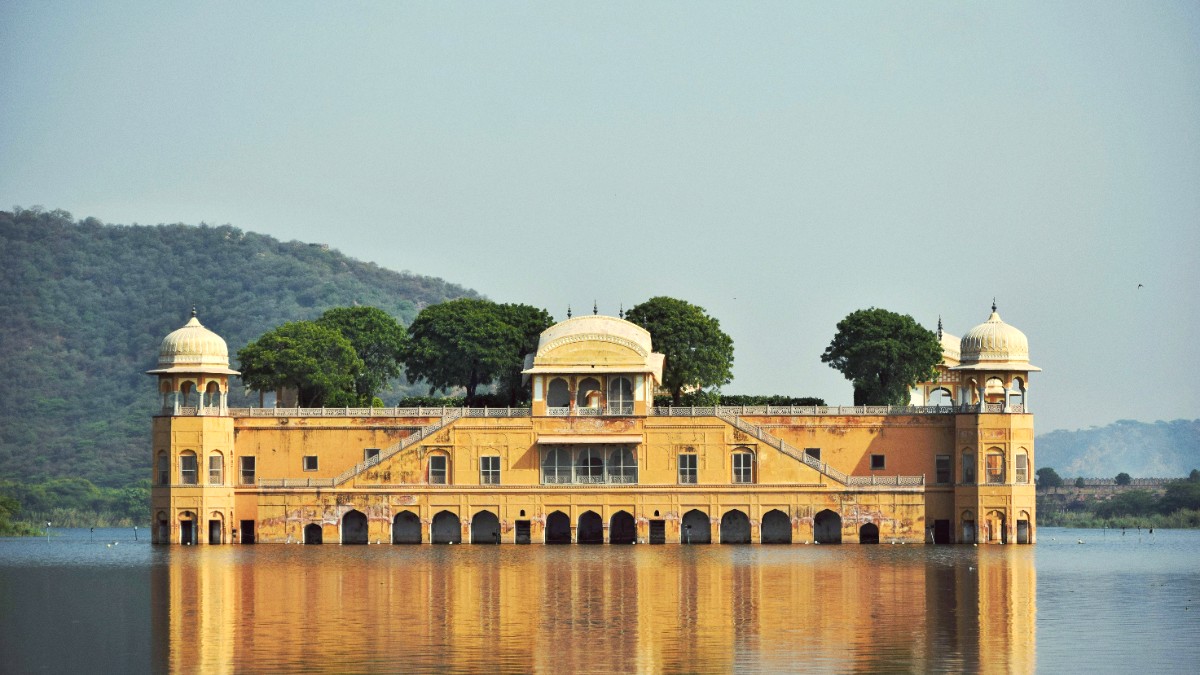
Rajasthan, India
These are the must-visit sites that define Jaipur's royal heritage.
For a exploration, consider guided tours or audio guides at these magnificent sites. Book tickets online for convenience.
Also includes City Palace, Jantar Mantar, Nahargarh Fort, and Jaigarh Fort with similar details for their context, visitor info, and tips.
Many local tours include these iconic landmarks, for a deep dive into history and culture. Find guided tours on GetYourGuide.
Purchase tickets in advance to save time, especially during peak season.
Look for combined tickets for multiple attractions to save money.
Jaipur's museums offer windows into its rich artistic and historical legacy.
The oldest museum in Rajasthan, in a magnificent Indo-Saracenic building. Showcases extensive artifacts including paintings, carpets, pottery, sculptures, and a rare Egyptian mummy.
Dedicated to the traditional craft of hand block printing. Features historical textiles, tools, and live demonstrations. Resides in a beautifully restored haveli near Amer Fort.
A multi-arts center designed by Charles Correa, drawing inspiration from Jaipur's original city plan. Functions as a hub for contemporary arts, hosting exhibitions, performances, and workshops.
Open daily, 9:00 AM to 5:00 PM for daytime visits, and 7:00 PM to 10:00 PM for the unique "night museum" experience. Entry: INR 300 foreigners, INR 50 Indian citizens.
Open Monday to Saturday, 10:30 AM to 5:00 PM. Entry: INR 300 foreigners, INR 150 Indian citizens.
Hours vary by exhibition/event. Free entry to general areas, paid for events. Confirm current hours before your visit.
An ancient Hindu pilgrimage site in the Aravalli hills with natural springs and sacred kunds. Features a large population of friendly monkeys. Be cautious with personal belongings. Visit early morning or late afternoon for peace.
A historic stepwell near Amer Fort, known for its intricate symmetrical staircases. Served as a community gathering spot and water source. A popular photography spot, often less crowded than forts. Entry is free.
A beautiful garden palace built by Maharaja Sawai Jai Singh II in 1728 for his second queen. Features tiered gardens, fountains, and murals depicting stories of Radha-Krishna. Open daily, 8:00 AM to 5:00 PM. Entry: INR 50 foreigners, INR 20 Indian citizens.
Beyond the major landmarks, Jaipur presents many other sites that share stories of its past.
Explore these less-trafficked but equally fascinating locations.
Jaipur's natural spaces provide a contrast to its historical architecture.
A large public garden located in the city center, offering a green escape. Hosts the Albert Hall Museum, a bird park, and a zoo within its premises. Open daily. Garden entry is free, though specific attractions inside may have fees.
Jaipur's largest park, featuring a long walking track, a musical fountain, and the impressive Flag Mast, flying one of India's tallest tricolor flags. It serves as a popular spot for locals for recreation. Open daily. Entry is free.
A picturesque palace located in the middle of Man Sagar Lake. Only its upper floor remains visible above the water, for a stunning and serene view, especially at sunset. The palace itself is not currently open for public entry. View from roadside.
A modern Hindu temple built entirely of white marble, dedicated to Lakshmi and Narayan. Its simple yet elegant architecture, intricate carvings, and peaceful atmosphere create a beautiful visit, especially at sunset.
This sanctuary offers ethical elephant experiences, like feeding, bathing, and walking with elephants, in a natural setting. It focuses on elephant welfare and presents an alternative to potentially exploitative elephant rides at Amer Fort. Reservations are needed.
A relatively new but instantly recognizable landmark at the entrance of Jawahar Circle Garden. It has quickly become a popular photography spot.
Find photo tours on GetYourGuideWhile a bit of a drive (approx. 95 km from Jaipur), this ancient stepwell is one of India's largest and deepest. It is a stunning architectural marvel with 3,500 narrow steps descending 13 stories into the ground. It served as a water source and a cool refuge.
Plan your visits with the following information.
These cultural hubs offer unique perspectives.
When visiting attractions, especially forts, wear comfortable shoes. Many sites demand considerable walking and climbing stairs.
Consider hydration, especially during warmer months.
Beyond the well-known sights, Jaipur holds several lesser-known places offering unique experiences.
A modern Hindu temple built entirely of white marble, dedicated to Lakshmi and Narayan. Its simple yet elegant architecture, intricate carvings, and peaceful atmosphere create a beautiful visit, especially at sunset.
This sanctuary offers ethical elephant experiences, like feeding, bathing, and walking with elephants, in a natural setting. It focuses on elephant welfare and presents an alternative to potentially exploitative elephant rides at Amer Fort. Reservations are needed.
A relatively new but instantly recognizable landmark at the entrance of Jawahar Circle Garden. It has quickly become a popular photography spot.
While a bit of a drive (approx. 95 km from Jaipur), this ancient stepwell is one of India's largest and deepest. It is a stunning architectural marvel with 3,500 narrow steps descending 13 stories into the ground.
It often combines well with a visit to Bhangarh Fort. It served as a source of water and a cool refuge.
These green spaces offer a refreshing escape from the city's hustle.
These sites are perfect for relaxation and photography.
When visiting attractions, especially forts, wear comfortable shoes. Many sites demand considerable walking and climbing stairs.
Consider hydration, especially during warmer months. Carry water bottles.
For popular attractions, pre-booking tickets online can save time and streamline your entry.